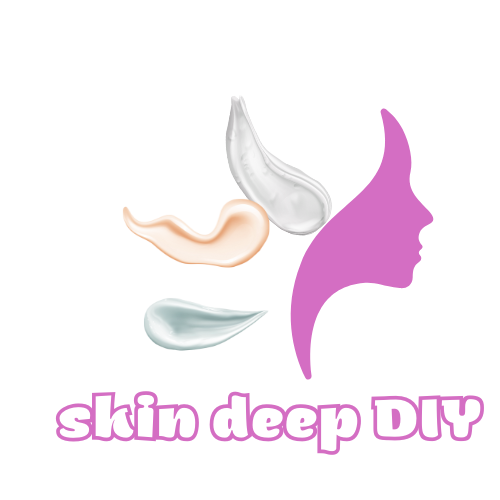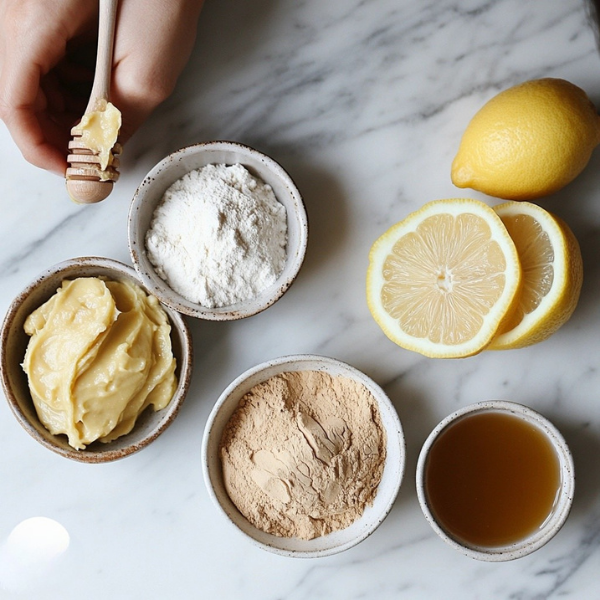Fight acne naturally with this powerful DIY mask using baking soda, apple cider vinegar, lemon, and honey to clarify and brighten your skin.
Introduction
Say goodbye to stubborn breakouts and hello to clearer skin with this Baking Soda & Apple Cider Vinegar Acne-Fighting Face Mask. This potent blend harnesses the purifying powers of natural acids and exfoliants to help reduce acne, fade dark spots, and detoxify pores—all in just 10 minutes. Perfect for acne-prone or oily skin, this mask is your weekly skincare warrior.
Benefits of This DIY Product
- Fights Acne-Causing Bacteria – Apple cider vinegar and lemon juice help kill bacteria and balance skin pH.
- Exfoliates Dead Skin Cells – Baking soda provides a gentle scrub to unclog pores and remove buildup.
- Reduces Inflammation – Raw honey soothes irritated skin and supports healing.
- Fades Dark Spots – Lemon juice brightens skin and helps fade post-acne marks.
- Unclogs and Shrinks Pores – The mask draws out impurities and leaves skin feeling clean and refreshed.
- Improves Skin Texture – Leaves your skin noticeably smoother after just one use.
Ingredients Overview
- 1 tablespoon baking soda – Mild exfoliant to unclog pores and remove dead skin.
- 1 teaspoon apple cider vinegar (raw, unfiltered) – Antibacterial and pH balancing.
- Juice from ½ lemon – Brightening, astringent, and helps fade acne scars.
- 1 teaspoon raw honey – Moisturizing and anti-inflammatory.
Instructions
- Mix Base Ingredients – In a small bowl, combine baking soda with apple cider vinegar. Allow it to fizz for a few seconds.
- Add Actives – Stir in lemon juice and raw honey until you have a smooth, spreadable paste.
- Apply Evenly – Using clean fingertips or a mask brush, apply the mixture to a clean, dry face. Avoid the eye area.
- Set and Relax – Let the mask sit for 5 minutes. A slight tingling sensation is normal.
- Rinse and Pat Dry – Gently wash off with warm water and pat your skin dry with a soft towel.
- Hydrate – Finish with a gentle moisturizer or soothing aloe vera gel.
How to Use It
- Frequency: Use once a week only. Overuse may irritate skin.
- Amount: One batch = one full-face application.
- Skin Type Tips:
- Ideal for oily, acne-prone, or combination skin.
- Not recommended for sensitive or dry skin types due to acidic content.
- Patch Test: Always patch test before full use, especially if you have reactive skin.
Storage & Shelf Life
- Storage: Use immediately. This mask does not store well due to the acidic and reactive ingredients.
- Shelf Life: Single-use only. Discard any leftovers.
Customization Tips
- Sensitive Skin: Omit lemon juice and reduce ACV to ½ teaspoon.
- Extra Moisture: Add ½ teaspoon of aloe vera gel or jojoba oil.
- Deeper Detox: Add 1 drop of tea tree oil for enhanced acne-fighting power.
Common Mistakes to Avoid
- Leaving It On Too Long – Limit to 5 minutes to prevent irritation or redness.
- Skipping the Patch Test – Especially important due to acidic ingredients.
- Using on Broken Skin – Avoid applying to open pimples or wounds.
- Applying Near Eyes – Lemon and vinegar can sting if they get too close to sensitive areas.
- Using Too Often – Once a week is enough; more can damage the skin barrier.
FAQs
1. Is this mask safe for sensitive skin?
Not recommended in full strength. You can dilute ACV and skip lemon for a milder version.
2. Will it sting when applied?
A mild tingling is normal due to the acids. If it burns or itches, rinse off immediately.
3. Can I use white vinegar instead of ACV?
No, apple cider vinegar is gentler and more suitable for skin use.
4. Does it help with blackheads?
Yes, it can help loosen and reduce blackheads with regular use.
5. Can I use bottled lemon juice?
Fresh lemon juice is best for potency and purity. Bottled versions may contain preservatives.
Conclusion
This baking soda and apple cider vinegar face mask is a powerhouse for tackling acne, dark spots, and oily skin—all while using ingredients you probably already have at home. With just 10 minutes a week, you can reveal smoother, clearer, more confident skin.

